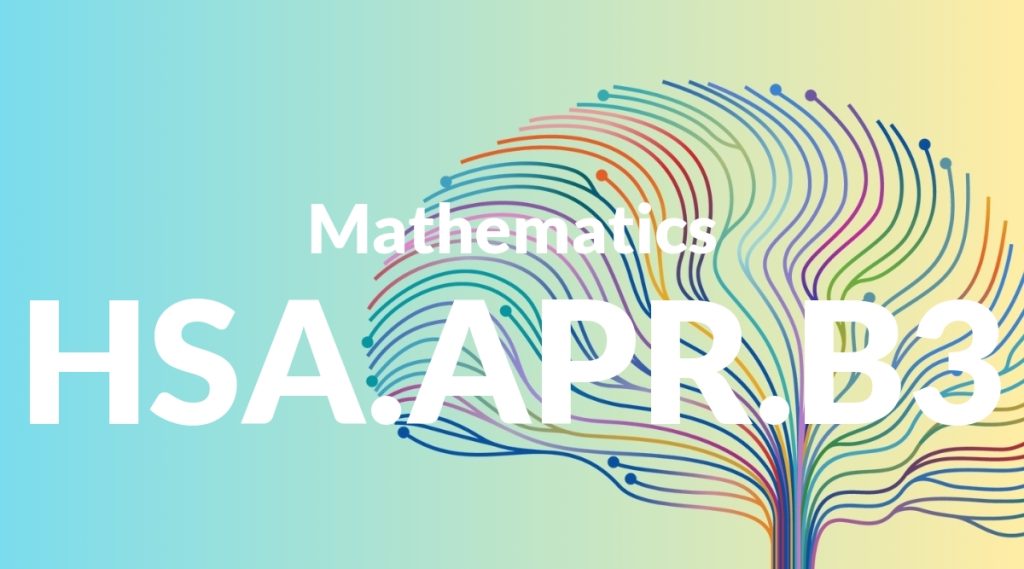Standard: HSA.APR.B3 – Identify zeros of polynomials when suitable factorizations are available, and use the zeros to construct a rough graph of the function defined by the polynomial.
Grade level: High School: Algebra
Subject: Mathematics
Domain: Arithmetic with Polynomials & Rational Expressions
Teacher Overview
This standard focuses on identifying the zeros of polynomials through factorization and using those zeros to sketch a rough graph of the polynomial function. This skill is crucial for understanding the behavior of polynomial functions and is foundational for more advanced topics in calculus and real-world applications. Students should have a solid grasp of polynomial operations and factoring techniques. They should also understand basic graphing principles and the concept of a function.
Mastering this standard prepares students for more complex polynomial analysis and calculus concepts like limits and derivatives, enhancing their problem-solving skills in various real-world contexts.
Common Misconception 1
A common misconception is that all polynomials can be easily factored. This is incorrect because some polynomials require advanced techniques or numerical methods to find their zeros.
Intervention 1
Introduce numerical methods or graphing calculators to find zeros of polynomials that are not easily factorable. Provide examples and practice problems that include both easily factorable and more complex polynomials.
Common Misconception 2
Another misconception is that the zeros of a polynomial are the only important features of its graph. This overlooks other critical aspects such as the polynomial’s end behavior, turning points, and intercepts.
Intervention 2
Teach students to analyze all features of a polynomial graph, including end behavior, turning points, and intercepts. Use graphing software to visualize these features and provide practice problems that require comprehensive graph analysis.
Prerequisite Knowledge
Students should be familiar with basic polynomial operations, factoring techniques, and understanding the concept of a function and its graph.
Subsequent Knowledge
After mastering this standard, students will be able to analyze more complex polynomial functions, solve polynomial equations, and apply these skills to calculus concepts like finding limits and derivatives.
Instructional Activities
- Factoring different types of polynomials and identifying their zeros
- Using graphing calculators to visualize polynomial functions
- Group activities where students create and analyze polynomial graphs
- Real-world problem-solving scenarios involving polynomial functions
- Interactive online simulations for polynomial graphing




